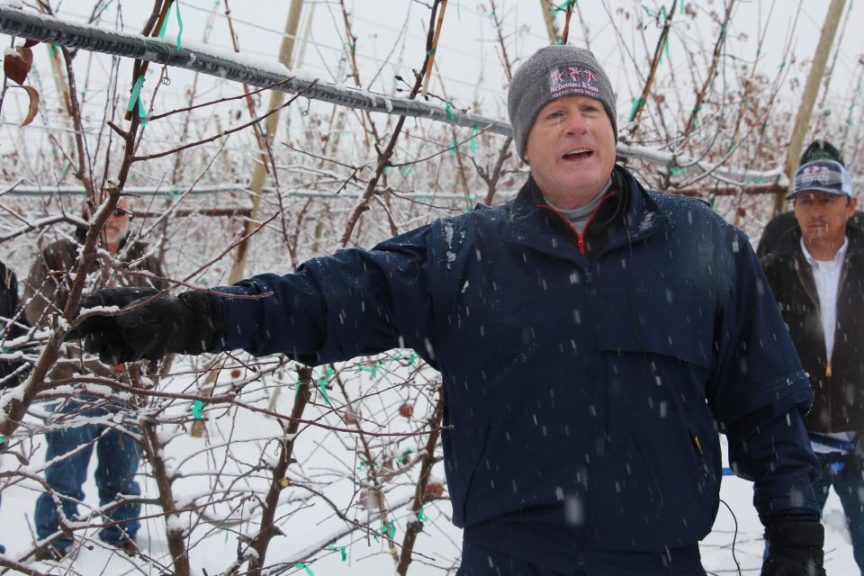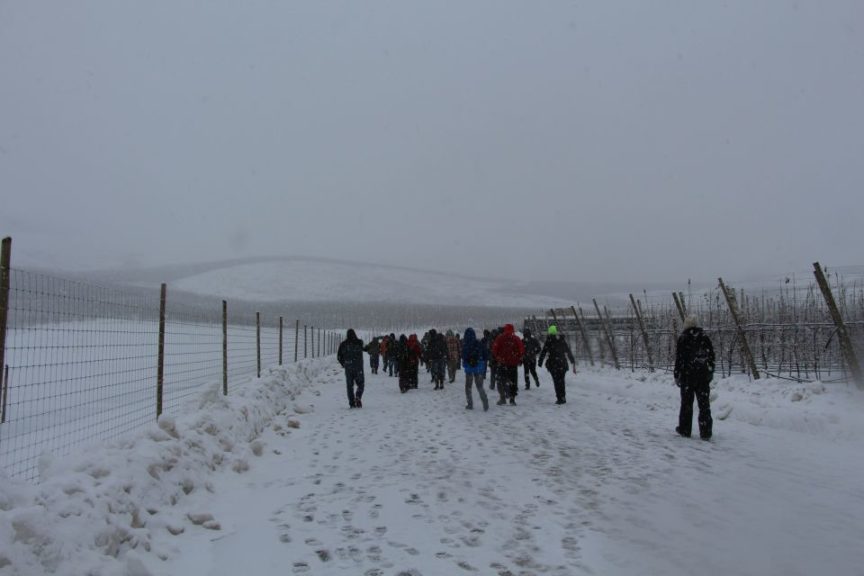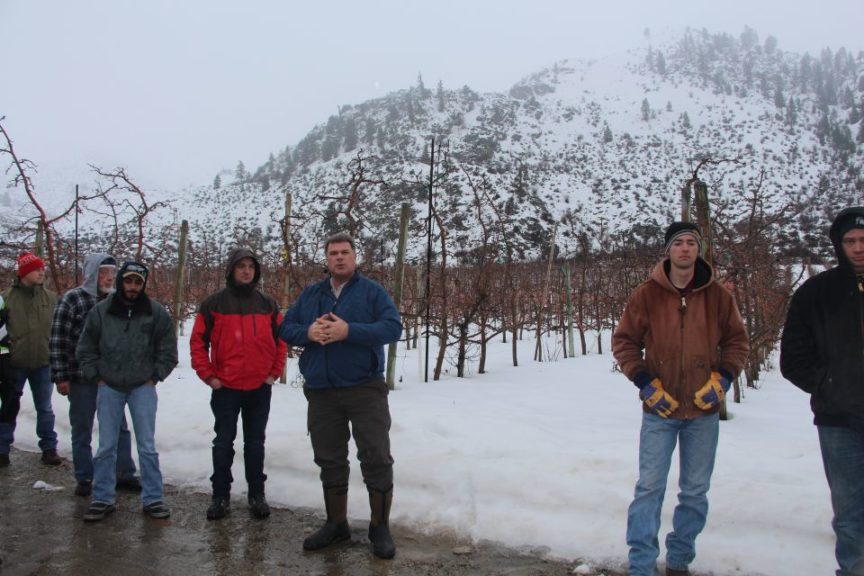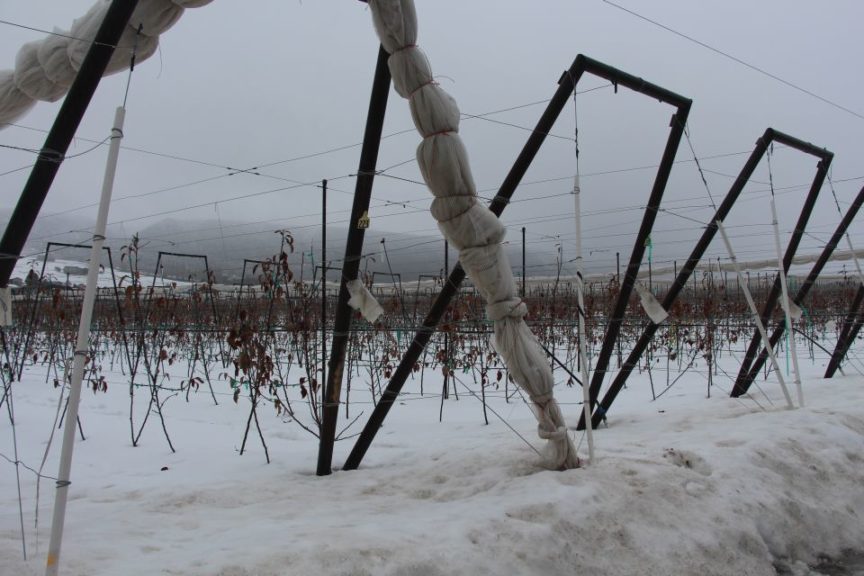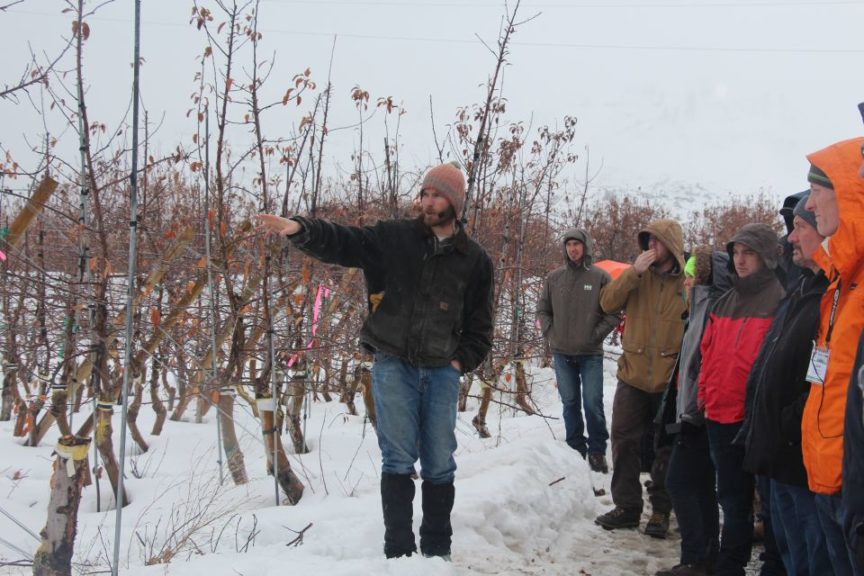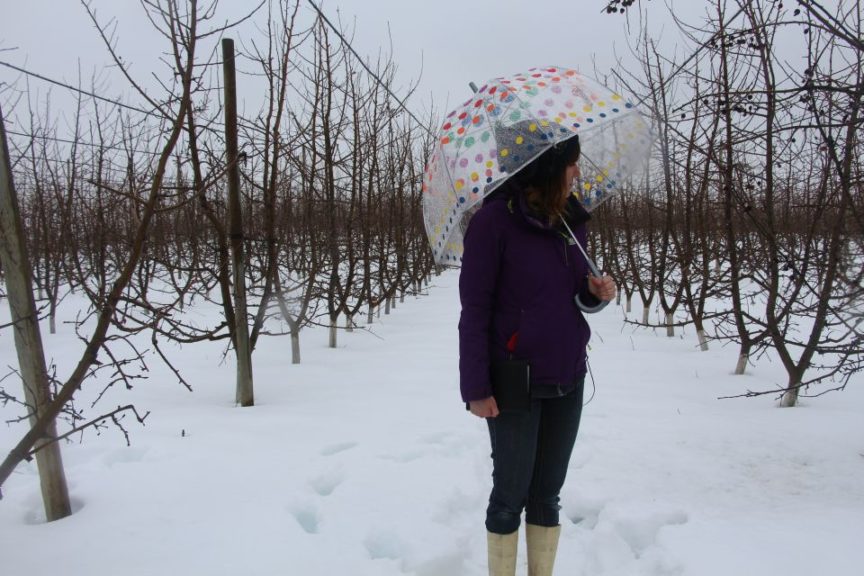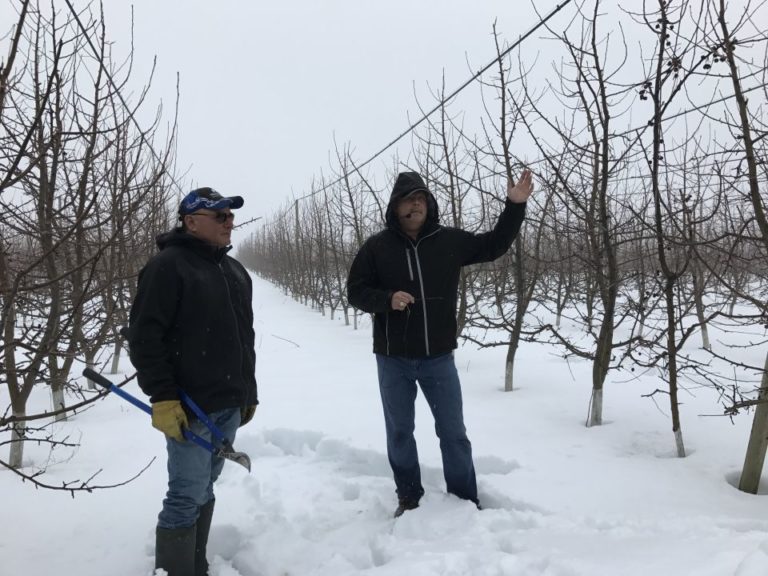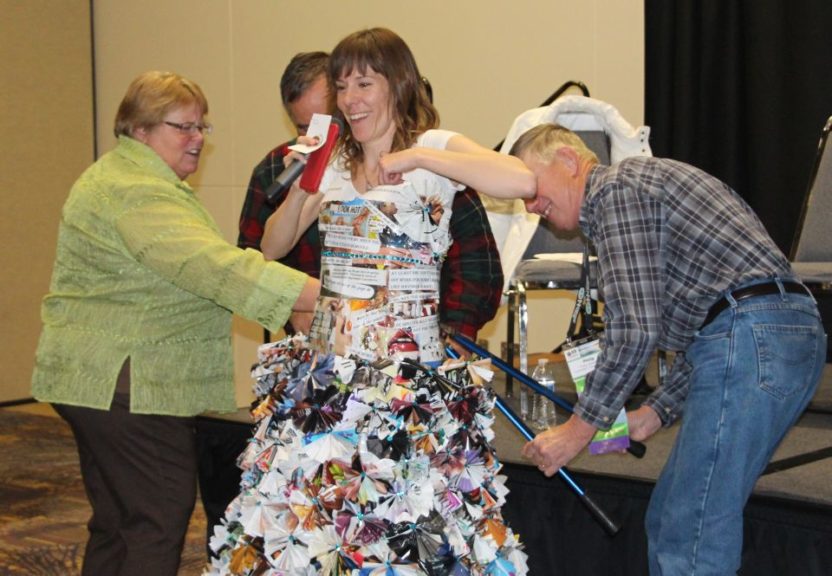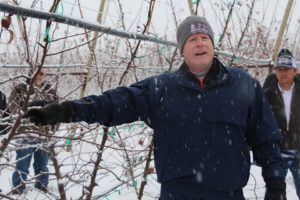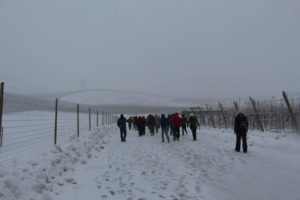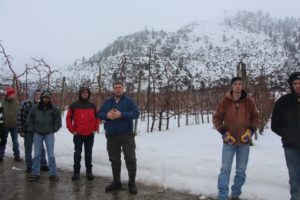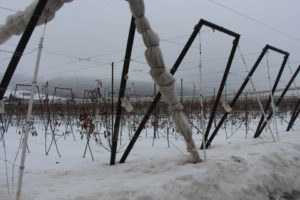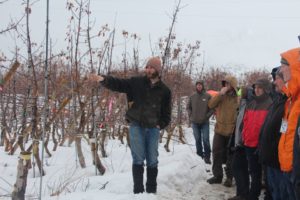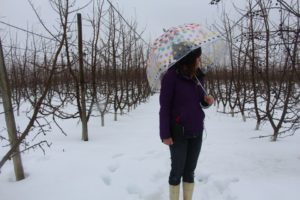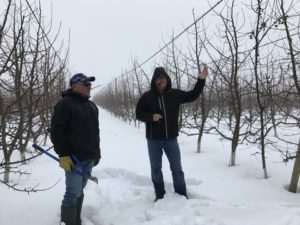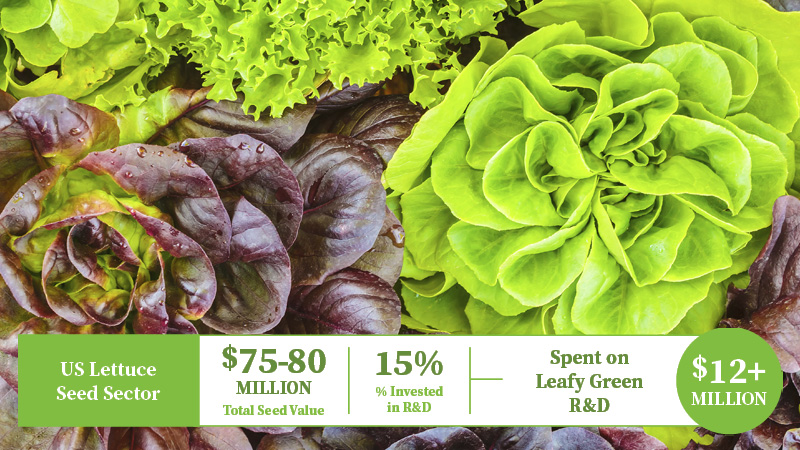Snow Doesn’t Stop Day 1 of IFTA Conference
Snow, sleet, rain, and more snow seemed to be the theme of the first day of tours in the Wenatchee, WA, area as the International Fruit Tree Association’s annual conference kicked off. While most conferences have an apple-heavy program while touching on cherries, pears, and occasionally peaches, what makes this conference unique is its focus solely on apples.
While many tour-goers were nervously talking about the warm temperatures the East Coast was experiencing, growers in the state of Washington have had a massive amount of snow to deal with, some saying it was the largest they’ve seen in decades. This volume of snow has delayed orchard tasks.
“Auvil’s said they were on time, but the rest of us are about two to three weeks behind where we’d like to be,” Jeff Cleveringa, of Starr Ranch and Oneonta as well as IFTA board member and tour guide said. “We’re all trying to figure out how to ramp up to get done on time.”
Tour-goers visited McDougall & Sons Legacy Orchard in East Wenatchee, where the views were hampered by the heavy snow and fog. Scott McDougall’s focus in on his steep V system with 2 foot by 12 feet planting, with a 12 foot drive row. McDougall estimates his steep V has about a 10° to 11° angle and about 1,815 trees to the acre.
This orchard, McDougall said is in transition to organics. McDougall sees his future in high-dollar varieties, especially with the cost per acre he put into his Legacy planting, which he estimates about $60,000 an acre, plus two years of pre-production costs.
“We can’t afford to be planting commodity varieties.”
McDougall says he doesn’t see pricing will hold for ‘Honeycrisp,’ and sees the future in these club varieties.
At Robison Orchards Inc. in Chelan, Jake Robison, a fourth-generation grower is two years into a transition plan to take over his family’s orchard. Robison Orchards Inc. is only 125 acres, but what they have identified is how to get high-value varieties in order to remain profitable.
“What’s good for the business is good for the business,” he says. “The higher value the better. We’re always looking for the next big thing that would make us a lot of money.”
Robison Orchard has ‘Jazz,’ ‘Envy,’ and Chelan Fresh’s ‘SugarBee.’
The Robison family has taken the approach of grafting over some of the varieties losing stakes in the market, such as the standard ‘Gala,’ ‘Granny Smith,’ ‘Golden Delicious,’ ‘Braeburn,’ and ‘Red Delicious’ with newer varieties like ‘Envy.’
Robison says this gives the family the chance to increase profitability in those blocks until they’re ready for a full replant, in what will likely be a 3 foot by 10 foot vertical tall spindle system.
“I want simplicity, and consistency in the orchard,” Robison says. He notes some of his family’s V system plantings are not as consistent.
Orchard Systems A Highlight
At Auvil Fruit Company’s Orondo orchard, growers got a chance to see a truly pedestrian orchard of 8 feet by 2.25 feet. Del Feigal, President of orchard management says his focus is to use water and nutrient management to control growth in this short orchard.
“My goal is 100 bins to the acre, on 25% less fruiting area,” he says.
This pedestrian orchard, Feigal says, is much easier for training. He doesn’t have to train employees on how to use equipment in the orchard, he doesn’t have to train employees how to use a ladder. And, the pedestrian orchard has saved him about 10% to 12% on farming costs. It also helps to keep the orchard organized, he says.
Feigal uses shade cloth to help with sunburn, he has noticed that it does hamper color. So, depending on the variety, he’ll open the cloth a few weeks before harvest.
A multileader V system was the highlight of the stop at Jim Divis Orchard, Inc. in Brewster. Divis, too, has turned his focus to high-value varieties such as ‘Pazazz’ and ‘Pacific Rose.’
“When you eat and measure ‘Pazazz’ at harvest, it has more sugar and acid than ‘Honeycrisp,’” Jim Divis says. Divis also notes he has not seen bitter pit in ‘Pazazz,’ but the flesh calcium content is about 10 times that of ‘Honeycrisp.’
Divis planted a freestanding ‘Honeycrisp’ block on M.106 with two leaders. He says it is hard to have a balanced ‘Fuji’ tree, but with ‘Honeycrisp,’ it works out well. That said, Divis estimates 95% of his orchard with two leaders are uniform.
Divis likes this two leader system because he can easily double his production without doubling the number of trees ordered.
For more on the conference, follow Senior Editor Christina Herrick on Instagram and Twitter.





